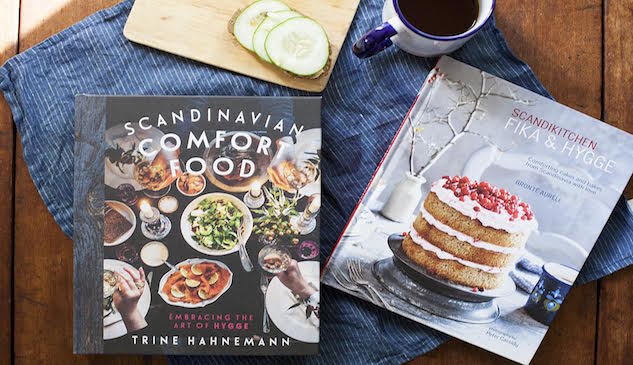Embracing Hygge: A Look at Two New Scandinavian Cookbooks
Photos by Anna Brones
As the daughter of a Swede growing up in the Pacific Northwest, candles were an essential part of getting through the gray and rainy winter. Every morning growing up, breakfast was always eaten by candlelight. I was never allowed conventional American breakfast cereal, it was either oatmeal with fruit (no brown sugar in sight) or open-faced sandwiches.
When you are a child, whatever world your parents create for you becomes your version of “normal.” For me, that world was magical and cozy, particularly in the fall and winter, a world of forest walks, wool blankets and a blazing fireplace. Breakfast by candlelight wasn’t luxurious or a special occasion, it was just a way to keep a bit of magic in the everyday.
That anyone would find this way of existence revolutionary has always surprised me, but over the last few years, watching how thrilled people get about Scandinavian food, design and culture, it has become clear to me that in our modern lifestyles we are perhaps searching to bring back a little coziness and magic into our everyday lives, no matter what the season.
That coziness and magic is exemplified by the word hygge. The Danish word for cozy — and not just a word, but a national concept for living well — has taken off around the globe. There are books on hygge, candles with the name of hygge, hygge blogs with top 10 tips. Everywhere you look, there’s a new article on hygge (here I am adding another one). We seem to be obsessed with recreating this Scandinavian cozy lifestyle.
Of course, while the world embraces hygge with the intensity of a new love, not everyone is
convinced. As Michael Booth, author of The Almost Nearly Perfect People: Behind the Myth of the Scandinavian Utopia, writes in an article featured on The Guardian, “With its relentless drive towards the middle ground and its dependence on keeping things light and breezy, hygge does get a bit boring sometimes. Worse, British anthropologist Richard Jenkins has described it as “normative to the point of coercive”. If you don’t know the rules, if you like to discuss politics or religion or anything other than your holidays, hygge’s appeal may be short-lived.”
But while there is a bit of truth in that argument, it shouldn’t stop us from embracing a little bit of the cozy Scandinavian lifestyle. There’s a reason people get so excited about it: feeling cozy, be it through what you eat, what you do and what wool sweater you wrap yourself in, feels good. You can still argue about politics if you want to (particularly given the current state of affairs) but wouldn’t you feel a little better if you did so over a good meal with a few candles, while wearing wool socks? I would.
Hygge probably isn’t going to solve the world’s problems, but it’s hard to imagine that sitting down to meals and sharing warmth with our community is going to make things worse.
This fall, there are two new cookbooks out to help you incorporate a little more hygge into your daily lifestyle, Scandinavian Comfort Food: Embracing the Art of Hygge and ScandiKitchen: Fika & Hygge. These aren’t the only hygge books out there. The last year has seen a variety of hygge titles, including even a hygge coloring book. For recipe lovers, there’s even more hygge to look forward to: the beginning of 2017 will welcome Signe Johansen’s much awaited How to Hygge. And if you want a more factual look at hygge, then keep an eye out for The Little Book of Hygge: Danish Secrets to Happy Living.
-

-

-

-

-

-

-

-

-

-

-

-

-

-

-

-

-

-

-

-

-

-

-

-

-

-

-

-

-

-

-

-

-

-

-

-

-

-

-

-










































